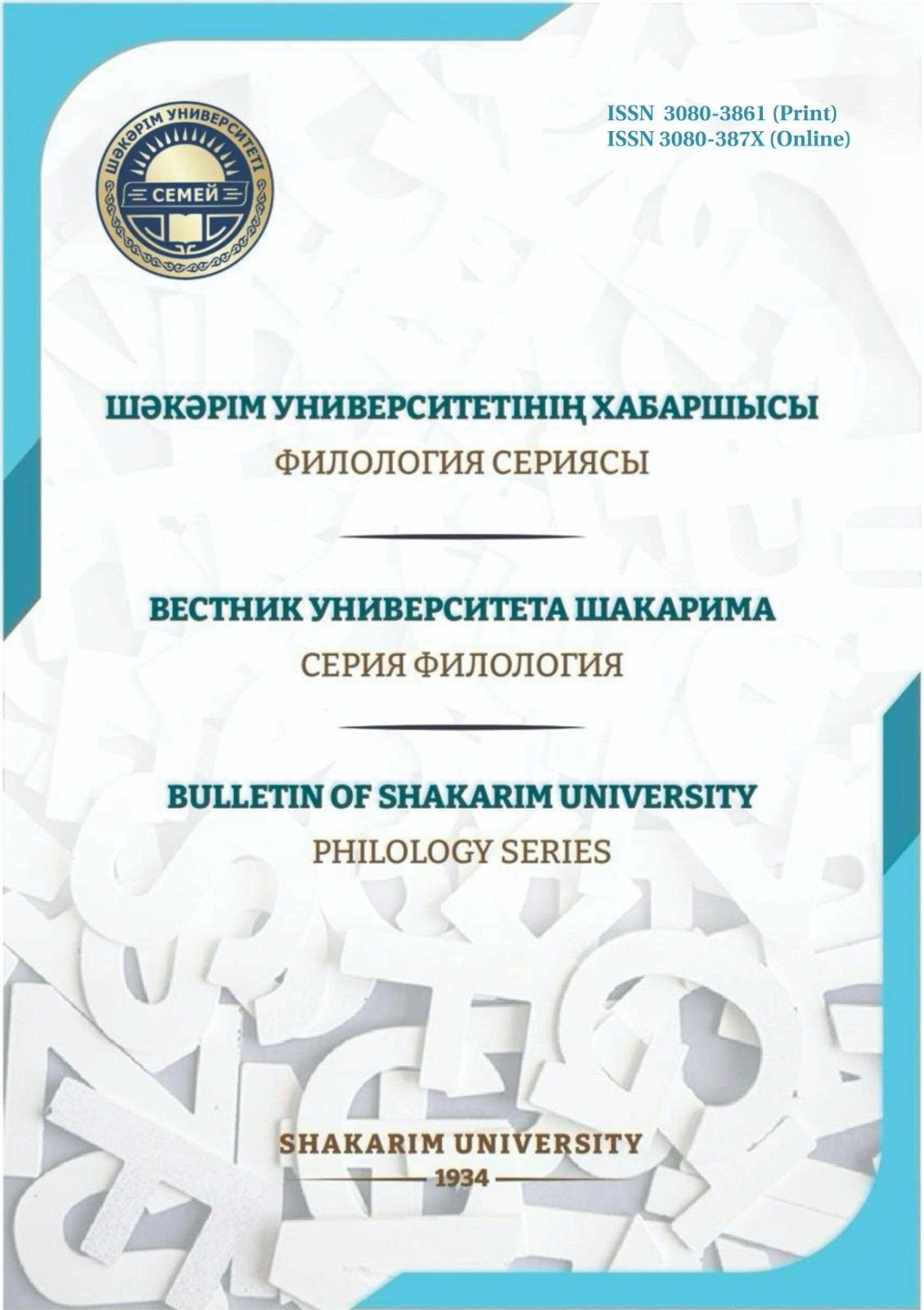MEANINGS AND FUNCTIONS OF POSTPOSITIONS AND POSTPOSITIONAL ANALYTICAL FORMANTS IN THE KAZAKH LANGUAGE
Keywords:
Kazakh language, phrase, part of speech, participle, analytical formant, grammatical meaning, syntactic connection, syntactic relationship.Abstract
The article presents a subjective new view of the author regarding the grammatical nature of auxiliary words, which are presented in textbooks and studies in Kazakh linguistics as declension interjections. To do this, the content of the concept of declension was first clarified. The essence of the declension in the Kazakh language is to connect the word in the subordinate part of the phrase with the word in the main part with the designation of its syntactic function by means of declension persons. Therefore, the article considered declension interjections as a separate word in the composition of a subordinate clause and analytical formants consisting of a preposition and an auxiliary word as an indicator of the analytical approach of the category of declension, their functions were analyzed in terms of connecting a word and a word in conjunction and establishing syntactic relationships between words. As a result, it was found that some auxiliary words, which are classified as declension interjections, do not participate in the middle of the syntactic connection between the word and the word and in the establishment of the syntactic function of the subordinate word. The study used methods of comparison, description, interpretation. The results of the study can be used in the disciplines «morphology of the modern Kazakh language», «syntax of simple sentences and phrases of the modern Kazakh language», taught in higher educational institutions. The article is intended for philologists and applicants, as well as for the general public who are interested in the grammatical system of the Kazakh language.
Downloads
Published
Issue
Section
License
Copyright (c) 2025 The editorial staff of the journal follows the copyright law of the Republic of Kazakhstan and relevant international agreements. The authors retain their copyright and provide the journal «Bulletin of Shakarim University. Series of Historical Sciences» right of first publication of the manuscript. The author has the right to copy and distribute the material in any medium and in any format, subject to appropriate reference to the journal. Readers and users can freely copy, distribute and adapt the material, provided that the author of the work is indicated and a link to this journal is provided. Copyright presupposes the integrity and responsibility of each co-author who made a significant contribution to the writing of the article. The author has the right to store his publications in an institutional or other repository of his choice, provided he provides the appropriate link to the journal’s website.

This work is licensed under a Creative Commons Attribution-NonCommercial 4.0 International License.
Copyright presupposes the integrity and responsibility of each co-author who made a significant contribution to the writing of the article.
The author has the right to store his publications in an institutional or other repository of his choice, provided he provides the appropriate link to the journal’s website.

